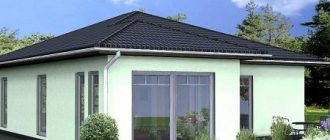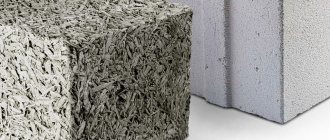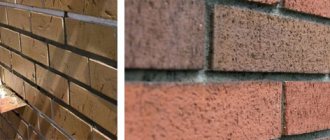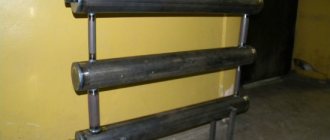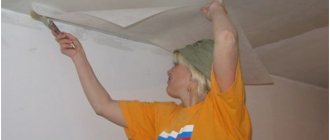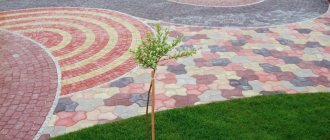Rubble stone often used in the construction process, as well as by landscape designers. It is valued for its resistance to heavy loads, immunity to adverse conditions and long service life. Each purpose has its own type of stone, which has certain qualities and characteristics. Before purchasing it, you should familiarize yourself with all the nuances.
What it is?
Rubble stone is pieces of rock characterized by non-standard shapes . Usually, fragments of sedimentary type raw materials are mined, the density of which is at least 1800 kg/1 m3. In most cases, limestone, sandstone, shell rock or diorite are used for mining. Rubble is also used to make crushed stone.
On sale you can find rectangular, rounded or sloping stones.
Characteristics of rubble stone.
- High strength. Brands M1200-M1400 are considered the most durable.
- Resistant to negative temperatures. For regions with harsh winters, use the F3000, F4000 brand.
- The compaction coefficient of the rubble depends on the dimensions of the boulder and is located at a medium or high level.
- The specific gravity varies depending on the selected variety. As a rule, a cubic meter of raw materials will weigh 2-3 tons.
- Volumetric weight no more than 50 kg.
- Bulk density is characterized by 1.3-1.9 tons per cubic meter.
- The size of the fractions is 25-50 cm.
If rubble stone is purchased for construction, you should choose a grade without cracks. You also need to pay attention to the “purity” indicator: the amount of clay or marl impurities should not exceed 2%. Purity can be determined by hitting a boulder with a sledgehammer: the higher the sonority and evenness of the sound of the blow, the more homogeneous the structure.
Pouring the foundation in winter and concreting technology in winter
How is rubble concrete masonry done in winter?
The strength of rubble concrete masonry depends on the strength of the concrete included in its composition. If rubble concrete masonry is erected using the freezing method, then during the thawing period its strength will be practically zero. Therefore, freezing of rubble concrete is allowed only after the concrete strength in it reaches 50% of the design value, but not less than 7.5 MPa. This is possible if the “thermos” method is used (for large volumes of concrete work) or electric heating of rubble concrete.
What are the features of laying foundations in winter conditions?
When laying foundations in winter, the base is protected from freezing, both during the work and at the end of it, otherwise subsidence of the base during thawing can lead to cracks in the masonry. In winter, it is impossible to arrange and level the base with sand layers exceeding 100 mm in thickness, since with a large thickness of the artificial sand base, uneven precipitation and cracks in the foundations and walls of the building are possible. When constructing foundations using the freezing method, it is allowed to use bricks, regularly shaped stones and blocks. It is also allowed to erect walls from bedded rubble stone if calculations confirm that they will withstand the load during the thawing period.
How to concrete foundations in winter conditions?
It is better to entrust the concreting of the foundation in winter to specialists. In winter, the following methods are used: concreting using the “thermos” method; concreting in thermoactive formwork; heating of concrete with thermoactive flexible coatings; heating concrete with infrared emitters; introduction of antifreeze additives. For example, according to the technology of concreting foundations using the “thermos” method, the concrete mixture is immersed in thermally insulated formwork. During electrical heating (through and peripheral), the structure must be constantly monitored using instrumentation. A type of electric heating is the electrical heat treatment of concrete with heating cables and wires. The most promising method is curing concrete in thermoactive formwork. Heat is transferred through the shield deck to the surface layer of concrete, and then spreads throughout the entire thickness.
Advantages and disadvantages
The advantages of buta include several properties.
- Long service life . If installation is carried out correctly, the raw material can last several hundred years. Granite rubble is used for gabion structures.
- Environmental friendliness. Booth belongs to the category of natural, natural raw materials. No chemical components are used during processing. This suggests that the stone is safe for people and nature.
- Aesthetic component . Rubble stone is presented in a wide range of colors, which makes it possible to create different compositions.
- Availability . Since the stone is natural, it is easy to mine and can be used independently.
- Practicality. Bottle is a cheap material that does not require a manufacturing plant, special equipment or equipped sites.
- Resistant to wear. Raw materials are not afraid of temperature changes, exposure to wind, humidity, insect and fungal attacks. The stone can cope with any load.
Among the shortcomings, only one point can be highlighted - installation is too difficult. In order to install the rubble, you will need a certain dexterity and ingenuity.
Nuances of the work
A layer of mortar should be poured, lifting the stones; this must be done in such a way that the solution gets into all the cavities. Rubble masonry should be carried out using a rammer or hammer, with their help the products are deposited. The middle of the foundation is filled with a fastening mortar, which is applied using a shovel. Excess mixture should seep into all seams; in summer, seams should be bandaged. It is important to change the pin and spoon elements. If elements are allowed to come into contact during laying, this will result in a decrease in the strength of the structure.
Application area
Rubble stone is used for the construction and finishing of the following objects:
- Foundations of structures that can be classified as monumental.
- Engineering structures. These include retaining walls and various enclosing structures in unheated structures.
- Hydraulic structures such as canals, wells, settling tanks, etc.
- Low height fences.
- Paving of roads and sidewalks in elite areas of settlements.
- Landscape and decorative elements.
- Finishing of plinths and facades of buildings and finishing of fences.
Rubble strip foundations attract the attention of builders because they do not require reinforcement, the role of which is performed by the stone plates themselves.
For hydraulic structures, the dimensions of rubble stone required are somewhat smaller than those indicated above. The weight should not exceed 30 kg, and the size should be limited to 300 - 350 mm.
Alpine slides, decorative pools, fountains, and frames for flower beds and lawns look especially impressive when made from this material.
How to select and process stone
Any DIY construction begins with the preparation of the material. The fence is no exception. Before starting construction, you should:
- carefully select a large and beautiful stone as in the photo, which will become the main one in the masonry. A smaller stone will be used to tie together the main stones. Non-standard, oblong stones will also be used in the foundation, flower beds and paths;
- purchased building material is not always clean, so it requires preliminary cleaning. To do this, just wash off the dirt with a stream of water. Wet stone guarantees a strong bond;
- The rubble is selected for masonry in shape and color so that the appearance of the fence is respectable.
Processing natural materials does not require special training. It is easier to chop along the fibers; the chip line is marked with a chisel. Irregularities are knocked down with a pick, and small defects with a chisel.
Technical characteristics and classification
- The main characteristic of rubble stone is its compressive resistance. It is this parameter that determines the grade of the material, which ranges from 100 to 1200. In other words, rubble stone can withstand compressive loads from 100 kg/cm2 to 1200 kg/cm2.
- The frost resistance of rubble must be at least 15 cycles. That is, the material is subjected to freezing and thawing at least fifteen times and this does not affect its load-bearing capacity. Brands of rubble stone according to this indicator can range from F15 to F300.
- Flakiness is a very important characteristic of rubble. The concept of flakiness allows us to determine the ratio of needle-shaped and flat grains in a stone. According to this indicator, bute is divided into five groups from group V (35-50%) to group I (less than 10%).
- The radioactivity of the material is divided into two classes:
- Class I (up to 370 Bq/kg) for the use of rubble in residential areas and populated areas;
- Class II (over 370 Bq/kg) for the use of stone in industrial construction.
There is another absolutely individual indicator, which is characterized by the tonality of the sound made by the stone after being hit with a hammer. The louder and smoother the sound, the fewer various impurities in the stone, the more uniform its structure.
Design Features
A conventional rubble foundation is built with a height of 1.6 m. If there is a high-quality sand cushion with water drainage, the height can be made smaller. Reinforcement is performed in the upper part of the strip structure. According to all the rules of construction work, rubble buildings are laid below the soil freezing mark.
Concrete class - not lower than 100 to prevent cracks from forming. A high-quality bitumen building foundation should be 300 mm above ground level. Only after this is the ground floor erected.
For small private construction, it is possible to use stones and bitumen without reinforcement. In this case, the total height of the concrete increases to two meters.
Types of rubble stones
- Industrial bottle. It is a rock stone, which was obtained by explosive method and was processed in crushing machines located at enterprises producing crushed stone. Most often, this type of rubble is mined in quarries using the stripping method. After blasting, an “aggregate” stone is obtained, which is removed from the quarry for further fractionation. The most suitable rocks for producing industrial rubble are limestone and sandstone, which, due to their physical and chemical properties, fully satisfy the needs of builders. Such important structures as dams, dams, bridge supports, and foundations of industrial facilities are erected from industrial rubble.
- Decorative rubble is a rubble stone that has been processed for finishing work and has the following distinctive features:
- Its dimensions range from 150 to 300 mm.
The configuration of each stone should resemble a disk, which will allow for finishing work to slightly increase the thickness of the wall or fence.
- Increased requirements for the cleanliness of each stone, requiring its cleaning before installation.
- Requires additional edge processing for adjustment during installation or to create a specific pattern.
- Rounded bottle - this is a stone that was extracted from reservoirs or subjected to special processing, as a result of which all the edges acquired rounded shapes. Very often, such stones are found in areas where tectonic shifts occurred during the Ice Age, which, rolling the stones, gave their surface irregular shapes with rounded sides. They are colloquially called “cobblestones”. You can download that rounded rubble is one of the most ancient stone materials, which was used both in Ancient Egypt and Rome. Most often they are used for:
- Paving roads and squares.
- Construction of fountains and decorative pools with artificial grottoes.
- Framing flower beds and lawns.
- Creation of decorative retaining walls.
- Creation of exclusive landscape elements.
- The bedded rubble has the shape of a parallelepiped and can be fully called the prototype of modern brick. It gets its name from the top and bottom edges of the stone, which masons call “beds.” The thickness of the slabs to obtain bedded rubble is at least 70 mm. Fences are erected from it, decorative borders are created, and building plinths are finished.
Decorative bottles are extracted exclusively by hand, since only careful handling of its surface allows it to preserve its uniqueness and artistic value. Especially in great demand are decorative stones, which over the course of centuries have received impressions of grass, moss branches on their surface, and have inclusions of other geological rocks in their bodies. This imprint of time gives them an antique charm. Nowadays, there are technologies that make it possible to artificially age a stone. All these factors significantly increase the cost of decorative rubble.
- Firstly, before starting any work with rubble stone, it is necessary to sort and sort it according to the following characteristics: By size, which will allow the stones to be laid correctly when performing masonry or finishing work, ensuring maximum strength characteristics of the structure.
- By color. This is especially important if rubble stone will serve as a finishing material. This will allow you to choose a color scheme that matches the design concept for finishing the structures.
After sorting and cleaning the rubble stone, you can begin stone work:
- Immediately before starting masonry, the rubble must be thoroughly soaked in water, since when it comes into contact with the mortar, it can remove water from it and thereby weaken the grade of the mortar.
- The first row of stones must be laid directly on the fresh concrete of the foundation (or plinth) of the building approximately four hours after the concrete has been laid. This will result in achieving high-quality adhesion between the foundation structure and the wall structure.
- To ensure an even plane of the wall, you need to pull the string from corner to corner of the building. If the dimensions of the building are large enough, then the entire length of the wall must be divided into sections of 5 - 6 meters.
- After the concrete has set, you can lay the wall using the traditional “classical” method.
- After a row or two has been laid out, after the initial setting of the mortar on which the stones are laid, it is necessary to undo the joints, which will give the wall a more neat and artistic look. When making joints, you must remember that there should be no holes or depressions between the stones in which water can accumulate or snow can accumulate. This can lead to the destruction of the wall and the formation of cracks.
Foundation
Since ancient times, rubble has been used for the construction of house supports. The pillars or foundation have withstood the loads of millennia and still demonstrate enviable durability.
Such a fundamental basis will be massive, and its creation will require large physical expenditures . However, all efforts will be justified, because a rubble retaining wall is an eternal construction that is not afraid of frost, moisture and loads.
Experts recommend laying rubble for the foundation if a large load-bearing structure is planned.
Large boulders should be placed at the bottom in the corners to ensure the structure is strong. For the first row, a cement mixture is used, and the voids are filled with fine stones.
Construction of a rubble foundation is a good solution because:
- the building will have impeccable characteristics - the strength of the stone allows it to withstand the load of a two-story house;
- resistance to bad weather conditions, even floods, as well as immunity to mechanical stress;
- from the financial side, such a foundation is also beneficial - the laying is simple, so you can handle it without the help of specialized craftsmen;
- the rubble is suitable for construction on any terrain and soil;
- if the laying was done correctly, such a foundation will be attractive, even if it has not been lined.
It is worth understanding that ideal technologies do not exist, so you need to become familiar with the negative side of constructing a rubble foundation. This is primarily due to labor intensity. Despite the fact that construction is accompanied by simplicity, all actions can only be done manually. Technology will not help in this matter.
To make the building strong, you will need to use only massive stones. Therefore, you will need an assistant who will provide support.
Fence
Many people prefer a rubble fence because such a fence is characterized by beauty and can provide protection against noise from the street and exhaust from vehicles. Immunity to negative weather conditions allows the fence to serve for many years.
Rubble stones are characterized by irregular shapes, so spans should be created from them. It is recommended to make pillars from hewn raw materials. Limestone, granite, dolomite or sandstone grades are suitable for work. The foundation must be made of reliable material, because a rubble fence will have a lot of weight. In most cases, the fence is created only around the main facade, so you should immediately decide on the size of the gate or gate.
It must be taken into account that the foundation cannot be interrupted, since the greatest load is placed on these areas.
Facing
Since it is not possible to build rubble buildings in every case, some people resort to cladding using such material. When choosing raw materials, you should take into account the color scheme, pattern and shape of the stone . If you follow these conditions, you will get a real masterpiece.
Construction of rubble foundations.
Rubble foundation masonry
used in the presence of cheap local rubble stone and a small volume of foundations.
Rubble foundations
are suitable for any type of
1-2-story buildings
(with wooden floors), on almost any foundation.
However, nowadays it is rare to find wooden floors in residential buildings; they prefer the most reliable ones - reinforced concrete floors. For buildings with floors made of reinforced concrete slabs, the foundations are made of prefabricated concrete blocks or monolithic reinforced concrete.
The design of a rubble foundation will work in accordance with the design only if a reinforced concrete stiffening belt is installed along the load-bearing walls under the reinforced concrete floors
.
This is often neglected, the foundation does not fulfill its functions, and cracks appear along the walls. Therefore, the foundation system must be a closed horizontal frame
, fixed along the alignment axes under the load-bearing walls of the house.
The head of the masonry walls on such foundations (for soft soils) also needs to be secured with a monolithic belt under the reinforced concrete floor
.
Rubble and rubble concrete foundations
performed
monolithic or prefabricated
.
Such foundations are made with a relatively small widening of the base. The widening of
rubble and rubble concrete
foundations
is carried out
by ledges or the installation of inclined edges
.
From a natural array
With the help of mechanical processing, stones of the correct shape can be obtained.
However, in most cases, especially in rural areas, untreated natural rubble and boulder stones
. Boulders are rarely used, mainly for decorative purposes, after the boulders are split in half.
Rubble stone
most often prepared
from limestone or sandstone
.
There are torn rubble and bedded rubble
(
with two parallel edges
).
Depending on the interaction with the soil (base), foundations are divided
:
- on fixed or stationary
foundations (Fig. 1 option A); - and on movable or floating
foundations (Fig. 1 option B).
In low-rise housing construction
almost always use
stationary foundations
resting on a fixed base.
Floating foundations
(Fig. 1 option B) are arranged only
on heaving soils
capable of changing their volume in a wet state during the process of freezing and thawing.
Such solutions are justified for structures that are small in volume and simple in design
, including
residential buildings
built on heavy heaving or subsiding soils.
Stationary foundations
resting on a fixed base, used
in the construction of low-rise buildings
.
There are sand, rubble, rubble, concrete, and brick foundations
.
Stationary foundations
There are mainly two types:
strip and columnar
.
Stationary strip foundations
(Fig. 2 option A) apply:
- for houses with walls
made
of heavy materials
under solid walls with relatively narrow openings (
brick, slag concrete, expanded clay concrete, reinforced concrete foundation blocks and slabs
).
Stationary columnar foundations
(Fig. 2 option B) apply:
- for houses with chopped, cobblestone, frame and panel walls,
- as well as for open and closed utility and summer premises
.
Stationary columnar or separate
rubble foundations
have the form of separate supports placed under the walls.
Foundation breakdown
performed in accordance with the requirements
of SNiP 2.02.01-83
.
For options for laying out the foundation,
see the sections of the site:
- "Geodetic work in construction"
- Geodetic alignment works"
See the section of the website for options for securing soils:
- Selection of foundations for buildings and structures. Methods of artificial improvement of foundations. Constructive methods of artificial improvement of foundations. Mechanical surface compaction of soils. Physico-chemical consolidation of soils.”
Protection of the foundation from groundwater
look in the section of the site:
- Penetrating waterproofing against groundwater - Foundation protection
The main types of rubble stone used in landscape design
Limestone
This is one of the most common materials of natural origin. Limestone is characterized by a rich range of colors. Based on your own tastes and personal preferences, you can use material of white, golden, cream and other colors. Another indisputable advantage of limestone is its ability to attract microorganisms, in particular moss. Although this property may seem like a disadvantage at first glance, it can significantly improve landscape design. There are also some downsides here. It is worth noting first of all the inability of limestone to resist natural destruction, which is usually observed under the influence of wind and moisture.
Sandstone
It has a wider range of colors than limestone. In nature, cream, sandy-golden, red, gray and many other types of sandstone are common. This is a more expensive material than limestone, but it is more durable.
Granite
It is a representative of one of the most common rocks. Granite is well known for its increased durability and special aesthetic appeal. It is widely used to create landscape design elements such as columns, benches, stairs, pillars and others. Any granite product will make the site more solid and luxurious.
Slate
It is also classified as a group of stones of natural origin, but its color palette is wider than that of granite. Purple, red, gray, green and other types of slate are found in nature. The variety of shades has made slate a very popular material in modern landscape design.
Features of the construction of fragmentary masonry
This type of fence involves erecting support pillars at a distance of 1.5 - 2 m from each other. A metal mesh is attached between them and the solution is thrown over it.
The stones are attached to both sides of the mesh, carefully compacting it. Subsequent rows are laid after the previous layer of concrete has hardened.
How to build pillars
Support pillars are built using the sliding formwork method, which is assembled from boards fastened with self-tapping screws. Recommended dimensions of pillars are 300X300 or 400X400 mm. Sequence of work:
- Boards for the first row of stones are installed on the foundation.
- Lay out the first layer of stone without cement and compact it, eliminating gaps.
- After careful measurements, the stones are placed with mortar. The cracks are filled with crushed stone and concrete mixture.
- Having filled the first row, continue filling the formwork with stones and mortar.
- After a day, the bottom row of formwork is removed and attached to the top row.
- Seal the cracks with a thick solution. In this way, the laying of the entire height of the pillar is continued.
Basic rules when working with boot
- Firstly, before starting any work with rubble stone, it is necessary to sort and sort it according to the following characteristics: By size, which will allow the stones to be laid correctly when performing masonry or finishing work, ensuring maximum strength characteristics of the structure.
- By color. This is especially important if rubble stone will serve as a finishing material. This will allow you to choose a color scheme that matches the design concept for finishing the structures.
Possible combinations
You can also find combined houses made of stone.
Decorative stone combined with natural finishes and clean stonework can create beauty both outside and inside a home. The material can be polished in various shades and types (glossy, matte, satin).
The option of combining natural stone with artificial will cost you much less than finishing with natural stone alone.
Rubble masonry technology
After sorting and cleaning the rubble stone, you can begin stone work:
- Immediately before starting masonry, the rubble must be thoroughly soaked in water, since when it comes into contact with the mortar, it can remove water from it and thereby weaken the grade of the mortar.
- The first row of stones must be laid directly on the fresh concrete of the foundation (or plinth) of the building approximately four hours after the concrete has been laid. This will result in achieving high-quality adhesion between the foundation structure and the wall structure.
- To ensure an even plane of the wall, you need to pull the string from corner to corner of the building. If the dimensions of the building are large enough, then the entire length of the wall must be divided into sections of 5 - 6 meters.
- After the concrete has set, you can lay the wall using the traditional “classical” method.
- After a row or two has been laid out, after the initial setting of the mortar on which the stones are laid, it is necessary to undo the joints, which will give the wall a more neat and artistic look. When making joints, you must remember that there should be no holes or depressions between the stones in which water can accumulate or snow can accumulate. This can lead to the destruction of the wall and the formation of cracks.
Rules for laying rubble
Bite is mined through a special kind of explosion. To work with the foundation, you should select those elements that have two flat sides. The laying of a rubble stone foundation is carried out using a cement mortar using the “under the blade” principle. The thickness of the seam between each stone should be at least one and a half centimeters. It is not recommended to do more, since the rubble will settle and the structure itself will collapse.
Laying rubble stone
Before laying, the stones must be cleaned of various types of contaminants and slightly wetted. Seams with minimal dimensions, as well as the strength of the ligation of foundation parts, will facilitate the use of fragments of different sizes.
All work on laying the rubble foundation is done by hand. The largest stones are usually located at the bottom and in the corners. Due to them, the stability of the structure is achieved. This can sometimes be very difficult, since sometimes you need to turn the bottle over more than once before finding the most optimal option for its location.
To increase the bearing capacity of this type of foundation, a cement mixture solution is poured under the first row of stone. The area where the rubble will be missing is covered with small stones. Later they can be used as wedges.
All subsequent rows of masonry are made using a thicker mortar. Here they already use stones no more than 30 centimeters thick. All elements of the rubble foundation are laid in such a way that they are located close to each other with maximum density and the consumption of concrete is minimal. The top row of masonry should overlap the vertical seams of the bottom row.
The rubble base can be expanded by creating ledges consisting of at least two rows. The connecting parts of the future structure must be correctly “tied” with the upper masonry. And remember that in some places excessive load is unacceptable, since this may be followed by a shift of the stones and complete destruction of the laid layers.
Decorating the house with stone
Today the market offers a wide selection of both natural and artificial materials for finishing a house with stone. The first ones include granite, marble, limestone, sandstone and many others.
Artificial ones include porcelain stoneware, clinker tiles, the so-called “flexible coating”, as well as concrete and polymer sand tiles. These are just some of the possible materials.
Next we will talk about finishing individual parts of the house with stone, and will also consider several very interesting solutions.
